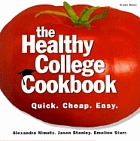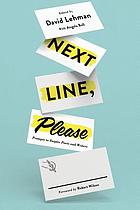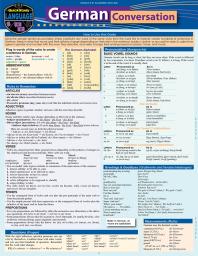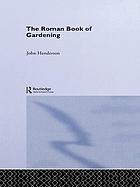Service Alert
Service Alert

 The Joy of Cooking
by
Irma S. Rombauer; Marion Rombauer Becker; Ginnie Hofmann (Illustrator); Ikki Matsumoto (Illustrator)
This lay-flat paperback format of the 1997 edition is truly an indispensable and beloved reference and recipe source for home cooks concerned about freshness, nutrition, and taste.
The Joy of Cooking
by
Irma S. Rombauer; Marion Rombauer Becker; Ginnie Hofmann (Illustrator); Ikki Matsumoto (Illustrator)
This lay-flat paperback format of the 1997 edition is truly an indispensable and beloved reference and recipe source for home cooks concerned about freshness, nutrition, and taste.
 The Healthy College Cookbook
by
Alexandra Nimetz; Jason Stanley; Emeline Starr
For nearly a decade, "The Healthy College Cookbook" has offered time-pressed, budget-crunched students a simple way to enjoy home cooking in their own small apartment kitchens or even dorm rooms. Written by students for students, the book offers hundreds of simple, healthful alternatives to dreary cafeteria fare. The first edition was so successful it returned to print 17 times. Now, this best-selling cookbook has been revised, expanded, and enlivened for a new generation of students. One hundred brand-new recipes have been added to the old favorites, including expanded breakfast options, recipes for the ever-popular George Foreman Grill, new smoothie creations, and pizza toppings for storebought crusts, English muffins, and pita bases. Recipes require only a handful of easy-to-find ingredients. The book is packed with vegetarian options, and every recipe is as nutritious as it is delicious. Most can be prepared in less time than it takes to order pizza. Most college students are new to cooking, and "The Healthy College Cookbook" contains a wealth of information and tips for the novice. It explains cooking terms, describes common spices, and offers basic, sensible advice on stocking a kitchen with equipment and food staples. The book isn't just for novices, however. Even the most discerning young palates will appreciate zesty Garlic Green Beans with Tofu or lively Mandarin-Mint Salad. These recipes are so quick, so inexpensive, and so delicious that they're bound to become dinner party favorites, years past graduation.
The Healthy College Cookbook
by
Alexandra Nimetz; Jason Stanley; Emeline Starr
For nearly a decade, "The Healthy College Cookbook" has offered time-pressed, budget-crunched students a simple way to enjoy home cooking in their own small apartment kitchens or even dorm rooms. Written by students for students, the book offers hundreds of simple, healthful alternatives to dreary cafeteria fare. The first edition was so successful it returned to print 17 times. Now, this best-selling cookbook has been revised, expanded, and enlivened for a new generation of students. One hundred brand-new recipes have been added to the old favorites, including expanded breakfast options, recipes for the ever-popular George Foreman Grill, new smoothie creations, and pizza toppings for storebought crusts, English muffins, and pita bases. Recipes require only a handful of easy-to-find ingredients. The book is packed with vegetarian options, and every recipe is as nutritious as it is delicious. Most can be prepared in less time than it takes to order pizza. Most college students are new to cooking, and "The Healthy College Cookbook" contains a wealth of information and tips for the novice. It explains cooking terms, describes common spices, and offers basic, sensible advice on stocking a kitchen with equipment and food staples. The book isn't just for novices, however. Even the most discerning young palates will appreciate zesty Garlic Green Beans with Tofu or lively Mandarin-Mint Salad. These recipes are so quick, so inexpensive, and so delicious that they're bound to become dinner party favorites, years past graduation.
 Next Line, Please
by
David Lehman (Editor); Angela Ball (As told to); Robert Wilson (Foreword by)
In this book, David Lehman, the longtime series editor of the Best American Poetry, offers a masterclass in writing in form and collaborative composition. An inspired compilation of his weekly column on the American Scholar website, Next Line, Please makes the case for poetry open to all. Next Line, Please gathers in one place the popular column's plethora of exercises and prompts that Lehman designed to unlock the imaginations of poets and creative writers. He offers his generous and playful mentorship on forms such as the sonnet, haiku, tanka, sestina, limerick, and the cento and shares strategies for how to build one line from the last. This groundbreaking book shows how pop-up crowds of poets can inspire one another, making art, with what poet and guest editor Angela Ball refers to as "spontaneous feats of language." How can poetry thrive in the digital age? Next Line, Please shows the way. Lehman writes, "There is something magical about poetry, and though we think of the poet as working alone, working in the dark, it is all the better when a community of like-minded individuals emerges, sharing their joy in the written word."
Next Line, Please
by
David Lehman (Editor); Angela Ball (As told to); Robert Wilson (Foreword by)
In this book, David Lehman, the longtime series editor of the Best American Poetry, offers a masterclass in writing in form and collaborative composition. An inspired compilation of his weekly column on the American Scholar website, Next Line, Please makes the case for poetry open to all. Next Line, Please gathers in one place the popular column's plethora of exercises and prompts that Lehman designed to unlock the imaginations of poets and creative writers. He offers his generous and playful mentorship on forms such as the sonnet, haiku, tanka, sestina, limerick, and the cento and shares strategies for how to build one line from the last. This groundbreaking book shows how pop-up crowds of poets can inspire one another, making art, with what poet and guest editor Angela Ball refers to as "spontaneous feats of language." How can poetry thrive in the digital age? Next Line, Please shows the way. Lehman writes, "There is something magical about poetry, and though we think of the poet as working alone, working in the dark, it is all the better when a community of like-minded individuals emerges, sharing their joy in the written word."
 Experimental Drawing
by
Robert Kaupelis
Creative exercises illustrated by old and modern masters including da Vinci, Michelangelo, Durer, Degas, Picasso, de Kooning, Dine, and Rauschenberg. Table of Contents: - Chapter One: A Few Words - Chapter Two: Some Basics--Contour, Gesture, and Modeled Drawing - Chapter Three: Organization/Structure--Making Things "Work Together" - Chapter Four: Using Light and Dark - Chapter Five: Photographs, Grids, and Projected Images - Chapter Six: Probing a Single Form-Idea - Chapter Seven: Old and Modern Masters--Appreciated and Exploited - Chapter Eight: Drawing Extended - Chapter Nine: Now to Begin...
Experimental Drawing
by
Robert Kaupelis
Creative exercises illustrated by old and modern masters including da Vinci, Michelangelo, Durer, Degas, Picasso, de Kooning, Dine, and Rauschenberg. Table of Contents: - Chapter One: A Few Words - Chapter Two: Some Basics--Contour, Gesture, and Modeled Drawing - Chapter Three: Organization/Structure--Making Things "Work Together" - Chapter Four: Using Light and Dark - Chapter Five: Photographs, Grids, and Projected Images - Chapter Six: Probing a Single Form-Idea - Chapter Seven: Old and Modern Masters--Appreciated and Exploited - Chapter Eight: Drawing Extended - Chapter Nine: Now to Begin...
 A Drawing Manual by Thomas Eakins
by
Thomas Eakins; Kathleen A. Foster (Editor, Introduction by); Amy Beth Werbel (Editor, Introduction by)
"Thomas Eakins wrote and illustrated this drawing manual for students, based on his famous lectures at the Pennsylvania Academy of the Fine Arts. After his forced resignation in 1886, Eakins abandoned plans to publish the manual. The manuscript and illustrations remained in his studio, where they were recovered after the death of the artist's widow in 1988. Published here for the first time, the drawing manual offers readers a unique opportunity to meet Eakins in his own words."--BOOK JACKET.
A Drawing Manual by Thomas Eakins
by
Thomas Eakins; Kathleen A. Foster (Editor, Introduction by); Amy Beth Werbel (Editor, Introduction by)
"Thomas Eakins wrote and illustrated this drawing manual for students, based on his famous lectures at the Pennsylvania Academy of the Fine Arts. After his forced resignation in 1886, Eakins abandoned plans to publish the manual. The manuscript and illustrations remained in his studio, where they were recovered after the death of the artist's widow in 1988. Published here for the first time, the drawing manual offers readers a unique opportunity to meet Eakins in his own words."--BOOK JACKET.
 German Conversation
by
Helga Schier
Language learning is retraining your brain, and any form of training requires focus, constant practice, and support. This guide gives the ultimate support by helping the user to instantly create hundreds of sentences for communication in German. Color-coded and easy-to-use, this highly portable PDF guide can be used for students and travelers alike.
German Conversation
by
Helga Schier
Language learning is retraining your brain, and any form of training requires focus, constant practice, and support. This guide gives the ultimate support by helping the user to instantly create hundreds of sentences for communication in German. Color-coded and easy-to-use, this highly portable PDF guide can be used for students and travelers alike.
 The Roman Book of Gardening
by
John Henderson
The first book to look at this particular subject, The Roman Book of Gardening brings together an extraordinarily varied selection of texts on Roman horticulture, celebrating herb and vegetable gardening in verse and prose spanning five centuries. In vivid new translations by John Henderson, Virgil's Georgics stand alongside neglected works by Columella, Pliny and Palladius, bringing to life the techniques and obstacles, delights and exasperations of the Roman gardener. We also hear of the digging, hoeing, planting and weeding which then, as now, went into creating the perfect garden. This is a timely and valuable contribution to our understanding of gardening history, Roman culture and Latin literature.
The Roman Book of Gardening
by
John Henderson
The first book to look at this particular subject, The Roman Book of Gardening brings together an extraordinarily varied selection of texts on Roman horticulture, celebrating herb and vegetable gardening in verse and prose spanning five centuries. In vivid new translations by John Henderson, Virgil's Georgics stand alongside neglected works by Columella, Pliny and Palladius, bringing to life the techniques and obstacles, delights and exasperations of the Roman gardener. We also hear of the digging, hoeing, planting and weeding which then, as now, went into creating the perfect garden. This is a timely and valuable contribution to our understanding of gardening history, Roman culture and Latin literature.
